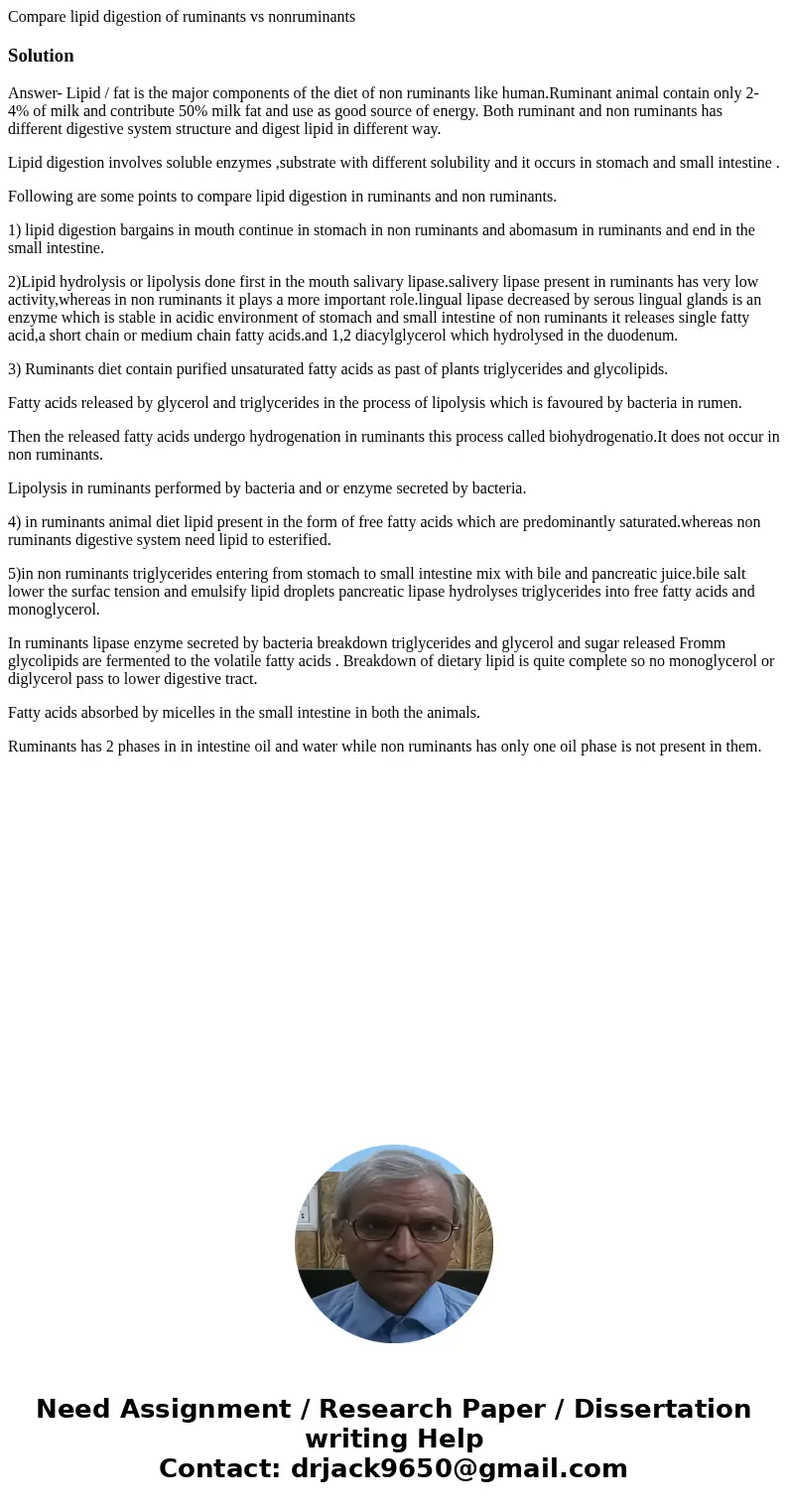Compare lipid digestion of ruminants vs nonruminantsSolution
Compare lipid digestion of ruminants vs nonruminants
Solution
Answer- Lipid / fat is the major components of the diet of non ruminants like human.Ruminant animal contain only 2-4% of milk and contribute 50% milk fat and use as good source of energy. Both ruminant and non ruminants has different digestive system structure and digest lipid in different way.
Lipid digestion involves soluble enzymes ,substrate with different solubility and it occurs in stomach and small intestine .
Following are some points to compare lipid digestion in ruminants and non ruminants.
1) lipid digestion bargains in mouth continue in stomach in non ruminants and abomasum in ruminants and end in the small intestine.
2)Lipid hydrolysis or lipolysis done first in the mouth salivary lipase.salivery lipase present in ruminants has very low activity,whereas in non ruminants it plays a more important role.lingual lipase decreased by serous lingual glands is an enzyme which is stable in acidic environment of stomach and small intestine of non ruminants it releases single fatty acid,a short chain or medium chain fatty acids.and 1,2 diacylglycerol which hydrolysed in the duodenum.
3) Ruminants diet contain purified unsaturated fatty acids as past of plants triglycerides and glycolipids.
Fatty acids released by glycerol and triglycerides in the process of lipolysis which is favoured by bacteria in rumen.
Then the released fatty acids undergo hydrogenation in ruminants this process called biohydrogenatio.It does not occur in non ruminants.
Lipolysis in ruminants performed by bacteria and or enzyme secreted by bacteria.
4) in ruminants animal diet lipid present in the form of free fatty acids which are predominantly saturated.whereas non ruminants digestive system need lipid to esterified.
5)in non ruminants triglycerides entering from stomach to small intestine mix with bile and pancreatic juice.bile salt lower the surfac tension and emulsify lipid droplets pancreatic lipase hydrolyses triglycerides into free fatty acids and monoglycerol.
In ruminants lipase enzyme secreted by bacteria breakdown triglycerides and glycerol and sugar released Fromm glycolipids are fermented to the volatile fatty acids . Breakdown of dietary lipid is quite complete so no monoglycerol or diglycerol pass to lower digestive tract.
Fatty acids absorbed by micelles in the small intestine in both the animals.
Ruminants has 2 phases in in intestine oil and water while non ruminants has only one oil phase is not present in them.

 Homework Sourse
Homework Sourse